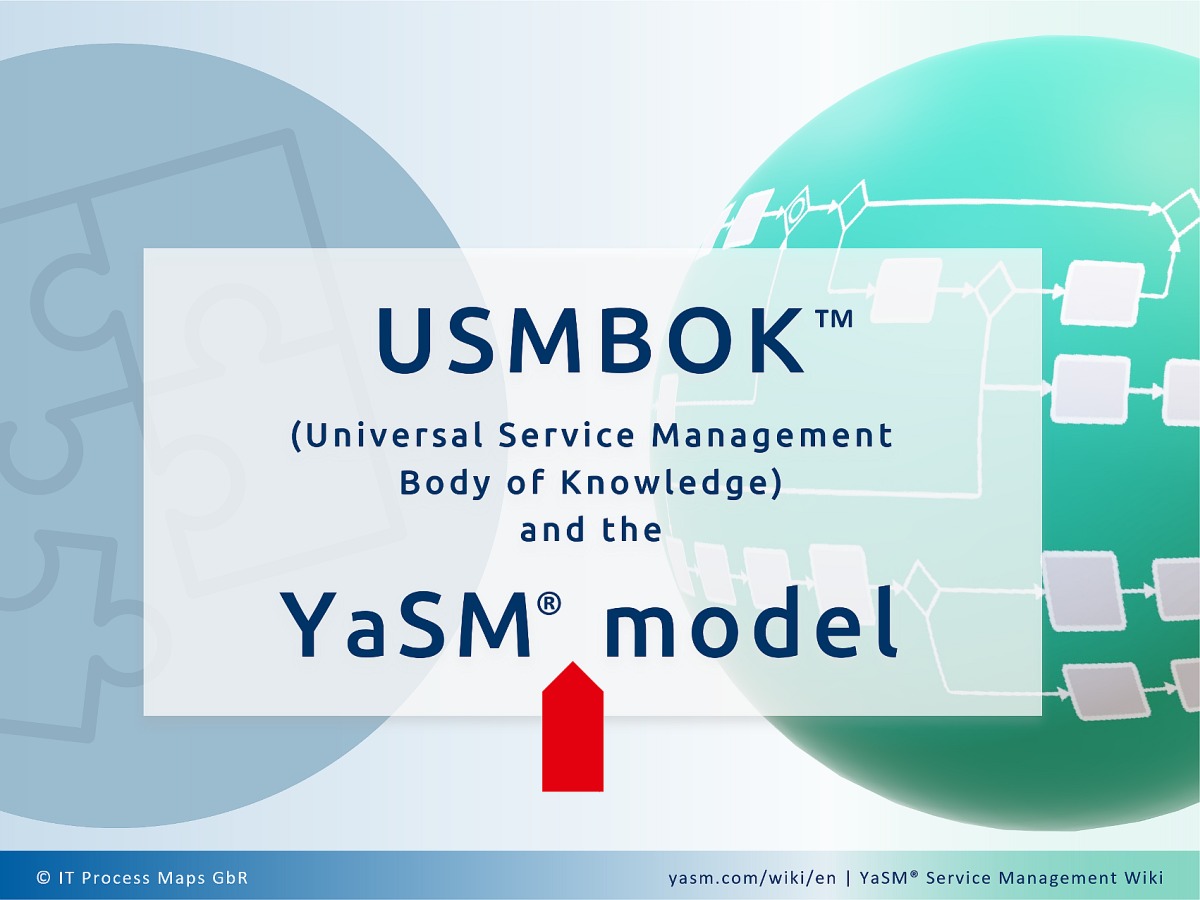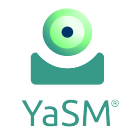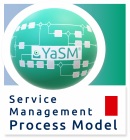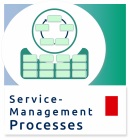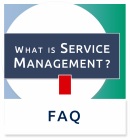YaSM and USMBOK: Difference between revisions
No edit summary |
No edit summary |
||
| Line 1: | Line 1: | ||
<itpmch><title>YaSM and USMBOK™ | YaSM Service Management Wiki</title> | <itpmch><title>YaSM and USMBOK™ | YaSM Service Management Wiki</title> | ||
<meta name="keywords" content="yasm and usmbok, yasm vs. usmbok, yasm usmbok differences, yasm usmbok similarities" /> | <meta name="keywords" content="yasm and usmbok, yasm vs. usmbok, yasm usmbok differences, yasm usmbok similarities" /> | ||
<meta name="description" content="Comparison: USMBOK | <meta name="description" content="The difference between USMBOK (Universal Service Management Body of Knowledge) and the YaSM service management model. Comparison: USMBOK service lifecycle stages/ USMBOK knowledge domains and related YaSM processes." /> | ||
<meta property="og:url" content="https://yasm.com/wiki/en/index.php/YaSM_and_USMBOK" /> | <meta property="og:url" content="https://yasm.com/wiki/en/index.php/YaSM_and_USMBOK" /> | ||
<meta property="og:title" content="YaSM and USMBOK™ | YaSM Service Management Wiki" /> | <meta property="og:title" content="YaSM and USMBOK™ | YaSM Service Management Wiki" /> | ||
<meta property="og:description" content="Comparison: USMBOK | <meta property="og:description" content="The difference between USMBOK (Universal Service Management Body of Knowledge) and the YaSM service management model. Comparison: USMBOK service lifecycle stages/ USMBOK knowledge domains and related YaSM processes." /> | ||
<meta property="og:site_name" content="YaSM"> | <meta property="og:site_name" content="YaSM Service Management"> | ||
<meta property="og:type" content="article" /> | <meta property="og:type" content="article" /> | ||
<meta property="fb:admins" content="100002035253209" /> | <meta property="fb:admins" content="100002035253209" /> | ||
<meta property="fb:admins" content="100002592864414" /> | <meta property="fb:admins" content="100002592864414" /> | ||
<meta property="og:image" content="https://yasm.com/wiki/en/img/yasm-frameworks/usmbok/usmbok-process-model-yasm.jpg" /> | |||
<meta property="og:image:width" content="1200" /> | |||
<meta property="og:image:height" content="900" /> | |||
<meta name="twitter:card" content="summary_large_image"> | |||
<meta name="twitter:site" content="@yasmcom"> | |||
<meta name="twitter:creator" content="@yasmcom"> | |||
<meta name="twitter:title" content="YaSM and USMBOK™"> | |||
<meta name="twitter:description" content="The difference between USMBOK (Universal Service Management Body of Knowledge) and the YaSM service management model. How the YaSM process templates support the adoption of USMBOK processes."> | |||
<meta name="twitter:image" content="https://yasm.com/wiki/en/img/yasm-frameworks/usmbok/usmbok-process-model-yasm.jpg"> | |||
<meta name="twitter:image:alt" content="Comparison: USMBOK (Universal Service Management Body of Knowledge) and the YaSM service management model. Ready-to-use process templates and process diagrams for USMBOK projects."> | |||
<link href="https://plus.google.com/104150539756444616711/posts" rel="publisher" /> | <link href="https://plus.google.com/104150539756444616711/posts" rel="publisher" /> | ||
</itpmch> | </itpmch> | ||
| Line 16: | Line 26: | ||
<p><b>Comparison:</b> YaSM and USMBOK™ (Universal Service Management Body of Knowledge)</p> | <p><b>Comparison:</b> YaSM and USMBOK™ (Universal Service Management Body of Knowledge)</p> | ||
<p><b>Part of</b>: <a href="https://yasm.com/wiki/en/index.php/What_is_YaSM#yasm-other-service-management-frameworks" title="YaSM and other service management frameworks and standards">YaSM vs. other service management frameworks and standards</a></html> | <p><b>Part of</b>: <a href="https://yasm.com/wiki/en/index.php/What_is_YaSM#yasm-other-service-management-frameworks" title="YaSM and other service management frameworks and standards">YaSM vs. other service management frameworks and standards</a></html> | ||
<p> </p> | <p> </p> | ||
<span id="About_USMBOK.E2.84.A2">According to the authors of [[YaSM_and_USMBOK|USMBOK (Universal Service Management Body of Knowledge)]], "USMBOK includes a set of generally accepted terms, methods, concepts and best practices". The [[Service Management|service management]] framework "introduces outside-in or customer centric thinking to the traditional ITSM thinking", while sharing many of its underlying principles with other service management frameworks and standards such as [[YaSM and ITIL|ITIL]]® [[#ITIL|[2]]] and [[ISO 20000|ISO/IEC 20000]] (USMBOK specifically refers to a "[[SP1: Set up and maintain the service management system|service management system]]", a term which figures prominently in ISO 20000). [[#ref-clayton-2012|[Clayton, 2012]]]</span> | |||
<html><div itemid="https://yasm.com/wiki/en/img/yasm-frameworks/usmbok/usmbok-process-model-yasm.jpg" itemscope itemtype="https://schema.org/ImageObject"> | |||
<a href="https://yasm.com/wiki/en/img/yasm-frameworks/usmbok/usmbok-process-model-yasm.jpg" title="USMBOK and YaSM service management templates" itemprop="contentUrl"> | |||
<meta itemprop="caption" content="Comparison: USMBOK (Universal Service Management Body of Knowledge) and the YaSM service management model." /> | |||
<meta itemprop="width" content="1200" /> | |||
<meta itemprop="height" content="900" /> | |||
<meta itemprop="dateCreated" content="2022-09-30" /> | |||
<meta itemprop="datePublished" content="2022-10-01" /> | |||
<meta itemprop="representativeOfPage" content="true"/> | |||
<span itemprop="thumbnail" itemscope itemtype="https://schema.org/ImageObject"> | |||
<meta itemprop="url" content="https://yasm.com/wiki/en/img/yasm-frameworks/usmbok/480px/usmbok-process-model-yasm.jpg" /> | |||
<meta itemprop="width" content="480" /> | |||
<meta itemprop="height" content="360" /> | |||
<meta itemprop="dateCreated" content="2022-09-30" /> | |||
<meta itemprop="datePublished" content="2022-10-01" /> | |||
</span> | |||
<meta itemprop="keywords" content="USMBOK process templates" /> | |||
<meta itemprop="keywords" content="USMBOK templates" /> | |||
<meta itemprop="keywords" content="USMBOK Universal Service Management Body of Knowledge" /> | |||
<img style="margin:10px 0px 30px 30px; float:right;" srcset="https://yasm.com/wiki/en/img/yasm-frameworks/usmbok/480px/usmbok-process-model-yasm.jpg 480w, https://yasm.com/wiki/en/img/yasm-frameworks/usmbok/usmbok-process-model-yasm.jpg 1200w" sizes="100vw" src="https://yasm.com/wiki/en/img/yasm-frameworks/usmbok/usmbok-process-model-yasm.jpg" width="480" height="360" title="USMBOK and YaSM service management templates" alt="Comparison: USMBOK (Universal Service Management Body of Knowledge) and the YaSM service management model. Ready-to-use process templates and process diagrams for USMBOK projects." /></a></div></html> | |||
<span style="word-wrap:normal;">For those reasons, it was both desirable and feasible to take the guidance in USMBOK into account when developing [[What is YaSM|YaSM]].</span> | |||
YaSM, however, cannot claim to be a "USMBOK process model". Organizations that want to achieve close alignment of their processes with the USMBOK recommendations are advised to obtain additional guidance from the USMBOK publications. | |||
'''''Note:''''' ''YaSM is not endorsed by the authors of USMBOK.'' | '''''Note:''''' ''YaSM is not endorsed by the authors of USMBOK.'' | ||
<p> </p> | |||
__TOC__ | |||
<br style="clear:both;"/> | |||
==<span id="usmbok-lifecycle-stages-yasm-processes">USMBOK service lifecycle stages and related YaSM processes</span>== | ==<span id="usmbok-lifecycle-stages-yasm-processes">USMBOK service lifecycle stages and related YaSM processes</span>== | ||
| Line 38: | Line 69: | ||
*Major activities performed during the stage. | *Major activities performed during the stage. | ||
<html><p><span id="md-webpage-description" itemprop="description">The following table provides an overview of how each stage in the USMBOK™ service lifecycle relates to one or several <a href="https://yasm.com/wiki/en/index.php/Service_Management_Processes" title="YaSM processes">YaSM service management processes</a>, to illustrate that YaSM and | <html><p><span id="md-webpage-description" itemprop="description">The following table provides an overview of how each stage in the USMBOK™ service lifecycle relates to one or several <a href="https://yasm.com/wiki/en/index.php/Service_Management_Processes" title="YaSM processes">YaSM service management processes</a>, to illustrate that YaSM and the Universal Service Management Body of Knowledge share many basic principles.</span> Its aim is not to provide a detailed and scientifically correct cross-reference between the two service management methods.</html> | ||
'''''Note:''''' ''This table is based on the 2012 edition of the USMBOK Guide.'' | '''''Note:''''' ''This table is based on the 2012 edition of the USMBOK Guide.'' | ||
| Line 46: | Line 77: | ||
{| class="wikitable" style="background: white;" | {| class="wikitable" style="background: white;" | ||
|- | |- | ||
!style="background:#379988; font-size: 110%; color:#ffffff; | !style="background:#379988; font-size: 110%; color:#ffffff;"|USM­BOK™ service life­cycle stages | ||
!style="background:#379988; font-size: 110%; color:#ffffff; | !style="background:#379988; font-size: 110%; color:#ffffff;"|Related YaSM processes | ||
!style="background:#379988; font-size: 110%; color:#ffffff; | !style="background:#379988; font-size: 110%; color:#ffffff;"|Notes | ||
|-style="vertical-align:top" | |-style="vertical-align:top" | ||
|1 The | |1 The Oppor­tunity Stage | ||
| | | | ||
*[[LP1: Set the strategic direction]] | *[[LP1: Set the strategic direction]] | ||
| Line 113: | Line 144: | ||
*The YaSM process for building new services is responsible for deploying the required service components. | *The YaSM process for building new services is responsible for deploying the required service components. | ||
|-style="vertical-align:top" | |-style="vertical-align:top" | ||
|11 | |11 Com­mis­sion | ||
| | | | ||
*-/- | *-/- | ||
| Line 120: | Line 151: | ||
*A number of [[Service Management Processes|YaSM service management processes]] may contribute to support services immediately after their deployment; for example, service operation may monitor particular parts of the (newly deployed) service infrastructure to verify if the service performs as expected under real customer workload. | *A number of [[Service Management Processes|YaSM service management processes]] may contribute to support services immediately after their deployment; for example, service operation may monitor particular parts of the (newly deployed) service infrastructure to verify if the service performs as expected under real customer workload. | ||
|-style="vertical-align:top" | |-style="vertical-align:top" | ||
|12 | |12 Ope­rate and Support | ||
| | | | ||
*[[LP4: Operate the services]] | *[[LP4: Operate the services]] | ||
| Line 165: | Line 196: | ||
{| class="wikitable" style="background: white;" | {| class="wikitable" style="background: white;" | ||
|- | |- | ||
!style="background:#379988; font-size: 110%; color:#ffffff; | !style="background:#379988; font-size: 110%; color:#ffffff;"|USM­BOK™ know­ledge domains/ areas | ||
!style="background:#379988; font-size: 110%; color:#ffffff; | !style="background:#379988; font-size: 110%; color:#ffffff;"|Related YaSM processes | ||
!style="background:#379988; font-size: 110%; color:#ffffff; | !style="background:#379988; font-size: 110%; color:#ffffff;"|Notes | ||
|-style="vertical-align:top" | |-style="vertical-align:top" | ||
|1.1 | |1.1 Gover­nance and Regula­tions Manage­ment | ||
| | | | ||
*[[LP1: Set the strategic direction]] | *[[LP1: Set the strategic direction]] | ||
| Line 179: | Line 210: | ||
*The strategic process sets the strategic objectives for the organization as a whole. | *The strategic process sets the strategic objectives for the organization as a whole. | ||
|-style="vertical-align:top" | |-style="vertical-align:top" | ||
|1.2 Policy | |1.2 Policy Manage­ment System | ||
| | | | ||
*[[SP1: Set up and maintain the service management system|SP1: Set up and maintain the service mgmt. system]] | *[[SP1: Set up and maintain the service management system|SP1: Set up and maintain the service mgmt. system]] | ||
| Line 185: | Line 216: | ||
*[[YaSM_Glossary#Service-management-policy|Service management policies]] are drawn up and maintained by YaSM's process for maintaining the SMS. | *[[YaSM_Glossary#Service-management-policy|Service management policies]] are drawn up and maintained by YaSM's process for maintaining the SMS. | ||
|-style="vertical-align:top" | |-style="vertical-align:top" | ||
|1.3 Customer | |1.3 Customer Port­folio Manage­ment | ||
| | | | ||
*[[LP1: Set the strategic direction]] | *[[LP1: Set the strategic direction]] | ||
| Line 192: | Line 223: | ||
*The strategic process establishes which markets and customers are to be served by the service provider's range of services. This includes initiating the development of new or significantly changed services. | *The strategic process establishes which markets and customers are to be served by the service provider's range of services. This includes initiating the development of new or significantly changed services. | ||
|-style="vertical-align:top" | |-style="vertical-align:top" | ||
|1.4 Customer | |1.4 Customer Relation­ship Manage­ment | ||
| | | | ||
*[[SP3: Manage customer relationships|SP3: Manage customer relation­ships]] | *[[SP3: Manage customer relationships|SP3: Manage customer relation­ships]] | ||
| Line 198: | Line 229: | ||
*-/- | *-/- | ||
|-style="vertical-align:top" | |-style="vertical-align:top" | ||
|1.5 Customer | |1.5 Customer Conti­nuity Manage­ment | ||
| | | | ||
*[[SP8: Prepare for disaster events]] | *[[SP8: Prepare for disaster events]] | ||
| Line 204: | Line 235: | ||
*-/- | *-/- | ||
|-style="vertical-align:top" | |-style="vertical-align:top" | ||
|1.6 Customer Risk | |1.6 Customer Risk Manage­ment | ||
| | | | ||
*[[SP7: Ensure security]] | *[[SP7: Ensure security]] | ||
| Line 212: | Line 243: | ||
*A number of YaSM processes are tasked with managing risks of particular types, for example security risks or risks associated with disaster events. | *A number of YaSM processes are tasked with managing risks of particular types, for example security risks or risks associated with disaster events. | ||
|-style="vertical-align:top" | |-style="vertical-align:top" | ||
|1.7 Customer | |1.7 Customer Require­ments Manage­ment | ||
| | | | ||
*[[LP2: Design new or changed services]] | *[[LP2: Design new or changed services]] | ||
| Line 227: | Line 258: | ||
{| class="wikitable" style="background: white;" | {| class="wikitable" style="background: white;" | ||
|- | |- | ||
!style="background:#379988; font-size: 110%; color:#ffffff; | !style="background:#379988; font-size: 110%; color:#ffffff;"|USM­BOK™ know­ledge domains/ areas | ||
!style="background:#379988; font-size: 110%; color:#ffffff; | !style="background:#379988; font-size: 110%; color:#ffffff;"|Related YaSM processes | ||
!style="background:#379988; font-size: 110%; color:#ffffff; | !style="background:#379988; font-size: 110%; color:#ffffff;"|Notes | ||
|-style="vertical-align:top" | |-style="vertical-align:top" | ||
|2.1 Service Marketing | |2.1 Service Marketing | ||
| Line 246: | Line 277: | ||
*The detailed properties of the services are defined in the service design stage, taking into account the customer needs identified by customer relationship management. | *The detailed properties of the services are defined in the service design stage, taking into account the customer needs identified by customer relationship management. | ||
|-style="vertical-align:top" | |-style="vertical-align:top" | ||
|2.3 Service Provision | |2.3 Service Provision Manage­ment | ||
| | | | ||
*[[LP1: Set the strategic direction]] | *[[LP1: Set the strategic direction]] | ||
| Line 257: | Line 288: | ||
*The process for maintaining the SMS performs regular reviews of the service management processes to assess their effectiveness and efficiency. | *The process for maintaining the SMS performs regular reviews of the service management processes to assess their effectiveness and efficiency. | ||
|- | |- | ||
|2.4 Provider | |2.4 Provider Relation­ship Manage­ment | ||
| | | | ||
*[[SP11: Manage suppliers]] | *[[SP11: Manage suppliers]] | ||
| Line 263: | Line 294: | ||
*-/- | *-/- | ||
|-style="vertical-align:top" | |-style="vertical-align:top" | ||
|2.5 Service Request | |2.5 Service Request Manage­ment | ||
| | | | ||
*[[LP1: Set the strategic direction]] | *[[LP1: Set the strategic direction]] | ||
| Line 275: | Line 306: | ||
*"Normal" service requests are handled by the YaSM process for resolving incidents and service requests. | *"Normal" service requests are handled by the YaSM process for resolving incidents and service requests. | ||
|-style="vertical-align:top" | |-style="vertical-align:top" | ||
|2.6 Service | |2.6 Service Oppor­tunity Manage­ment | ||
| | | | ||
*[[LP1: Set the strategic direction]] | *[[LP1: Set the strategic direction]] | ||
| Line 291: | Line 322: | ||
{| class="wikitable" style="background: white;" | {| class="wikitable" style="background: white;" | ||
|- | |- | ||
!style="background:#379988; font-size: 110%; color:#ffffff; | !style="background:#379988; font-size: 110%; color:#ffffff;"|USM­BOK™ know­ledge domains/ areas | ||
!style="background:#379988; font-size: 110%; color:#ffffff; | !style="background:#379988; font-size: 110%; color:#ffffff;"|Related YaSM processes | ||
!style="background:#379988; font-size: 110%; color:#ffffff; | !style="background:#379988; font-size: 110%; color:#ffffff;"|Notes | ||
|-style="vertical-align:top" | |-style="vertical-align:top" | ||
|3.1 Service Quality Planning | |3.1 Service Quality Planning | ||
| Line 306: | Line 337: | ||
|- | |- | ||
| | | | ||
3.3 Service Lifecycle | 3.3 Service Lifecycle Manage­ment | ||
|- | |- | ||
| | | | ||
3.4 Capability | 3.4 Capability Manage­ment | ||
|- | |- | ||
| | | | ||
3.5 | 3.5 Perfor­mance Manage­ment | ||
|- | |- | ||
| | | | ||
3.6 Audit and | 3.6 Audit and Assess­ment Manage­ment | ||
|} | |} | ||
| Line 324: | Line 355: | ||
{| class="wikitable" style="background: white;" | {| class="wikitable" style="background: white;" | ||
|- | |- | ||
!style="background:#379988; font-size: 110%; color:#ffffff; | !style="background:#379988; font-size: 110%; color:#ffffff;"|USM­BOK™ know­ledge domains/ areas | ||
!style="background:#379988; font-size: 110%; color:#ffffff; | !style="background:#379988; font-size: 110%; color:#ffffff;"|Related YaSM processes | ||
!style="background:#379988; font-size: 110%; color:#ffffff; | !style="background:#379988; font-size: 110%; color:#ffffff;"|Notes | ||
|-style="vertical-align:top" | |-style="vertical-align:top" | ||
|4.1 Service Level | |4.1 Service Level Manage­ment | ||
| | | | ||
*[[LP2: Design new or changed services]] | *[[LP2: Design new or changed services]] | ||
| Line 339: | Line 370: | ||
*The service owners are ultimately responsible for delivering the agreed service levels and play a key role in these activities. | *The service owners are ultimately responsible for delivering the agreed service levels and play a key role in these activities. | ||
|-style="vertical-align:top" | |-style="vertical-align:top" | ||
|4.2 Service Asset | |4.2 Service Asset Manage­ment | ||
| | | | ||
*[[LP2: Design new or changed services]] | *[[LP2: Design new or changed services]] | ||
| Line 345: | Line 376: | ||
*[[LP4: Operate the services]] | *[[LP4: Operate the services]] | ||
*[[LP5: Improve the services]] | *[[LP5: Improve the services]] | ||
*[[SP4: Manage configuration information|SP4: Manage config. | *[[SP4: Manage configuration information|SP4: Manage config. infor­mation]] | ||
*[[SP11: Manage suppliers]] | *[[SP11: Manage suppliers]] | ||
*[[SP12: Manage service financials]] | *[[SP12: Manage service financials]] | ||
| Line 354: | Line 385: | ||
*The financial management process provides insight into the costs for service provisioning, which includes tracking of financial information related to service assets. | *The financial management process provides insight into the costs for service provisioning, which includes tracking of financial information related to service assets. | ||
|-style="vertical-align:top" | |-style="vertical-align:top" | ||
|4.3 Service Security | |4.3 Service Security Manage­ment | ||
| | | | ||
*[[SP7: Ensure security]] | *[[SP7: Ensure security]] | ||
| Line 360: | Line 391: | ||
*-/- | *-/- | ||
|-style="vertical-align:top" | |-style="vertical-align:top" | ||
|<span id="Service-Capacity-Management">4.4 Service Capacity | |<span id="Service-Capacity-Management">4.4 Service Capacity Manage­ment</span> | ||
| | | | ||
*[[LP2: Design new or changed services]] | *[[LP2: Design new or changed services]] | ||
| Line 370: | Line 401: | ||
*Capacity and performance requirements are defined during the service design stage, and services are then built with those requirements in mind. Service operation will be responsible for measuring capacity and performance levels, which allows the service improvement process to initiate corrective measures through service improvement plans if capacity must be adjusted or performance enhanced. | *Capacity and performance requirements are defined during the service design stage, and services are then built with those requirements in mind. Service operation will be responsible for measuring capacity and performance levels, which allows the service improvement process to initiate corrective measures through service improvement plans if capacity must be adjusted or performance enhanced. | ||
|-style="vertical-align:top" | |-style="vertical-align:top" | ||
|4.5 Service Continuity | |4.5 Service Continuity Manage­ment | ||
| | | | ||
*[[SP8: Prepare for disaster events]] | *[[SP8: Prepare for disaster events]] | ||
| Line 376: | Line 407: | ||
*-/- | *-/- | ||
|-style="vertical-align:top" | |-style="vertical-align:top" | ||
|<span id="Service-Availability-Management">4.6 Service | |<span id="Service-Availability-Management">4.6 Service Availa­bility Manage­ment</span> | ||
| | | | ||
*[[LP2: Design new or changed services]] | *[[LP2: Design new or changed services]] | ||
| Line 393: | Line 424: | ||
{| class="wikitable" style="background: white;" | {| class="wikitable" style="background: white;" | ||
|- | |- | ||
!style="background:#379988; font-size: 110%; color:#ffffff; | !style="background:#379988; font-size: 110%; color:#ffffff;"|USM­BOK™ know­ledge domains/ areas | ||
!style="background:#379988; font-size: 110%; color:#ffffff; | !style="background:#379988; font-size: 110%; color:#ffffff;"|Related YaSM processes | ||
!style="background:#379988; font-size: 110%; color:#ffffff; | !style="background:#379988; font-size: 110%; color:#ffffff;"|Notes | ||
|-style="vertical-align:top" | |-style="vertical-align:top" | ||
|5.1 Service Support | |5.1 Service Support Manage­ment | ||
| | | | ||
*[[LP4.6: Resolve incidents and service requests]] | *[[LP4.6: Resolve incidents and service requests]] | ||
| Line 404: | Line 435: | ||
*The customer relationship process acts as the point of contact for customers if contractual issues are to be resolved. Customer relationship management is also in charge of dealing with prospective customers. | *The customer relationship process acts as the point of contact for customers if contractual issues are to be resolved. Customer relationship management is also in charge of dealing with prospective customers. | ||
|-style="vertical-align:top" | |-style="vertical-align:top" | ||
|5.2 | |5.2 Opera­tions Level Manage­ment | ||
| | | | ||
*[[LP4: Operate the services]] | *[[LP4: Operate the services]] | ||
| Line 413: | Line 444: | ||
*The management of operations contracts (in YaSM referred to as "operational service agreements") is the responsibility of the service portfolio process, while supplier contracts (in YaSM termed "external service agreements") are dealt with in the supplier management process. | *The management of operations contracts (in YaSM referred to as "operational service agreements") is the responsibility of the service portfolio process, while supplier contracts (in YaSM termed "external service agreements") are dealt with in the supplier management process. | ||
|-style="vertical-align:top" | |-style="vertical-align:top" | ||
|5.3 Service Supplier | |5.3 Service Supplier Manage­ment | ||
| | | | ||
*[[SP11: Manage suppliers]] | *[[SP11: Manage suppliers]] | ||
| Line 419: | Line 450: | ||
*-/- | *-/- | ||
|-style="vertical-align:top" | |-style="vertical-align:top" | ||
|5.4 Service Incident | |5.4 Service Incident Manage­ment | ||
| | | | ||
*[[LP4.6: Resolve incidents and service requests]] | *[[LP4.6: Resolve incidents and service requests]] | ||
| Line 425: | Line 456: | ||
*-/- | *-/- | ||
|-style="vertical-align:top" | |-style="vertical-align:top" | ||
|5.5 Service Problem | |5.5 Service Problem Manage­ment | ||
| | | | ||
*[[LP4.7: Resolve problems]] | *[[LP4.7: Resolve problems]] | ||
| Line 431: | Line 462: | ||
*-/- | *-/- | ||
|-style="vertical-align:top" | |-style="vertical-align:top" | ||
|5.6 Service Impact | |5.6 Service Impact Manage­ment | ||
| | | | ||
*-/- | *-/- | ||
| Line 445: | Line 476: | ||
{| class="wikitable" style="background: white;" | {| class="wikitable" style="background: white;" | ||
|- | |- | ||
!style="background:#379988; font-size: 110%; color:#ffffff; | !style="background:#379988; font-size: 110%; color:#ffffff;"|USM­BOK™ know­ledge domains/ areas | ||
!style="background:#379988; font-size: 110%; color:#ffffff; | !style="background:#379988; font-size: 110%; color:#ffffff;"|Related YaSM processes | ||
!style="background:#379988; font-size: 110%; color:#ffffff; | !style="background:#379988; font-size: 110%; color:#ffffff;"|Notes | ||
|-style="vertical-align:top" | |-style="vertical-align:top" | ||
|6.1 Service Facilities | |6.1 Service Facilities Manage­ment | ||
| | | | ||
*[[LP2: Design new or changed services]] | *[[LP2: Design new or changed services]] | ||
| Line 457: | Line 488: | ||
*YaSM treats facilities as a particular type of service infrastructure. The service lifecycle processes are in charge of designing, building and operating facilities, in line with any other components required for providing the service provider's range of services. | *YaSM treats facilities as a particular type of service infrastructure. The service lifecycle processes are in charge of designing, building and operating facilities, in line with any other components required for providing the service provider's range of services. | ||
|-style="vertical-align:top" | |-style="vertical-align:top" | ||
|6.2 Service Application | |6.2 Service Application Manage­ment | ||
| | | | ||
*[[LP2: Design new or changed services]] | *[[LP2: Design new or changed services]] | ||
| Line 467: | Line 498: | ||
*The supplier management process is in charge of procuring applications from software vendors. | *The supplier management process is in charge of procuring applications from software vendors. | ||
|-style="vertical-align:top" | |-style="vertical-align:top" | ||
|6.3 Service Systems | |6.3 Service Systems Manage­ment | ||
| | | | ||
*[[LP4: Operate the services]] | *[[LP4: Operate the services]] | ||
| Line 473: | Line 504: | ||
*YaSM's service operation process is tasked with maintaining, monitoring and repairing the systems infrastructure of services. | *YaSM's service operation process is tasked with maintaining, monitoring and repairing the systems infrastructure of services. | ||
|-style="vertical-align:top" | |-style="vertical-align:top" | ||
|6.4 Service | |6.4 Service Configu­ration Manage­ment | ||
| | | | ||
*[[SP4: Manage configuration information|SP4: Manage config. | *[[SP4: Manage configuration information|SP4: Manage config. infor­mation]] | ||
| | | | ||
*YaSM's process for managing configuration information provides the framework for control-ling configuration items and the related configuration information. In particular, the configuration manager is responsible for specifying what types of CIs are to be controlled, and who is authorized to modify those CIs and the related contents of the CMS. | *YaSM's process for managing configuration information provides the framework for control-ling configuration items and the related configuration information. In particular, the configuration manager is responsible for specifying what types of CIs are to be controlled, and who is authorized to modify those CIs and the related contents of the CMS. | ||
*The actual modifications to the CMS are mostly performed by other service management processes. The configuration management process will track and verify the modifications and perform regular audits of the information in the CMS. | *The actual modifications to the CMS are mostly performed by other service management processes. The configuration management process will track and verify the modifications and perform regular audits of the information in the CMS. | ||
|-style="vertical-align:top" | |-style="vertical-align:top" | ||
|6.5 Service Change | |6.5 Service Change Manage­ment | ||
| | | | ||
*[[SP5: Assess and coordinate changes]] | *[[SP5: Assess and coordinate changes|SP5: Assess and coor­dinate changes]] | ||
| | | | ||
*USMBOK's change management knowledge area refers to change assessment and scheduling as well as change implementation. | *USMBOK's change management knowledge area refers to change assessment and scheduling as well as change implementation. | ||
*The role of YaSM's change assessment process is focused specifically on assessing and coordinating (proposed) changes. RFCs may originate from a number of YaSM processes, which are responsible for implementing the changes once they are approved. | *The role of YaSM's change assessment process is focused specifically on assessing and coordinating (proposed) changes. RFCs may originate from a number of YaSM processes, which are responsible for implementing the changes once they are approved. | ||
|-style="vertical-align:top" | |-style="vertical-align:top" | ||
|6.6 Service Release | |6.6 Service Release Manage­ment | ||
| | | | ||
*[[LP3: Build new or changed services]] | *[[LP3: Build new or changed services]] | ||
| Line 501: | Line 532: | ||
{| class="wikitable" style="background: white;" | {| class="wikitable" style="background: white;" | ||
|- | |- | ||
!style="background:#379988; font-size: 110%; color:#ffffff; | !style="background:#379988; font-size: 110%; color:#ffffff;"|USM­BOK™ know­ledge domains/ areas | ||
!style="background:#379988; font-size: 110%; color:#ffffff; | !style="background:#379988; font-size: 110%; color:#ffffff;"|Related YaSM processes | ||
!style="background:#379988; font-size: 110%; color:#ffffff; | !style="background:#379988; font-size: 110%; color:#ffffff;"|Notes | ||
|-style="vertical-align:top" | |-style="vertical-align:top" | ||
|7.1 Financial | |7.1 Financial Manage­ment of Services | ||
| | | | ||
*[[SP12: Manage service financials]] | *[[SP12: Manage service financials]] | ||
| Line 526: | Line 557: | ||
*This USMBOK knowledge area presents a brief summary of the Lean approach and cannot be related directly to specific YaSM processes. | *This USMBOK knowledge area presents a brief summary of the Lean approach and cannot be related directly to specific YaSM processes. | ||
|-style="vertical-align:top" | |-style="vertical-align:top" | ||
|7.4 Service | |7.4 Service Know­ledge Manage­ment | ||
| | | | ||
*-/- | *-/- | ||
| Line 570: | Line 601: | ||
<meta itemprop="alternativeHeadline" content="YaSM and USMBOK™ (Universal Service Management Body of Knowledge)" /> | <meta itemprop="alternativeHeadline" content="YaSM and USMBOK™ (Universal Service Management Body of Knowledge)" /> | ||
<link itemprop="url" href="https://yasm.com/wiki/en/index.php/YaSM_and_USMBOK" /> | <link itemprop="url" href="https://yasm.com/wiki/en/index.php/YaSM_and_USMBOK" /> | ||
<link itemprop="primaryImageOfPage" href="https://yasm.com/wiki/en/img/yasm-frameworks/usmbok/usmbok-process-model-yasm.jpg" /> | |||
<link itemprop="isPartOf" href="https://yasm.com/wiki/en/index.php/What_is_YaSM#yasm-other-service-management-frameworks" /> | <link itemprop="isPartOf" href="https://yasm.com/wiki/en/index.php/What_is_YaSM#yasm-other-service-management-frameworks" /> | ||
<meta itemprop="isBasedOnUrl" content="https://yasm.com/en/products/yasm-process-map" /> | <meta itemprop="isBasedOnUrl" content="https://yasm.com/en/products/yasm-process-map" /> | ||
| Line 582: | Line 614: | ||
[[Category:Service management frameworks and standards]] | [[Category:Service management frameworks and standards]] | ||
<!-- --- --> | <!-- --- --> | ||
Revision as of 16:19, 1 October 2022
Comparison: YaSM and USMBOK™ (Universal Service Management Body of Knowledge)
Part of: YaSM vs. other service management frameworks and standards
According to the authors of USMBOK (Universal Service Management Body of Knowledge), "USMBOK includes a set of generally accepted terms, methods, concepts and best practices". The service management framework "introduces outside-in or customer centric thinking to the traditional ITSM thinking", while sharing many of its underlying principles with other service management frameworks and standards such as ITIL® [2] and ISO/IEC 20000 (USMBOK specifically refers to a "service management system", a term which figures prominently in ISO 20000). [Clayton, 2012]
For those reasons, it was both desirable and feasible to take the guidance in USMBOK into account when developing YaSM.
YaSM, however, cannot claim to be a "USMBOK process model". Organizations that want to achieve close alignment of their processes with the USMBOK recommendations are advised to obtain additional guidance from the USMBOK publications.
Note: YaSM is not endorsed by the authors of USMBOK.
The USMBOK guide includes a description of the service lifecycle, representing significant service stages from identification of an opportunity to provide a service to service retirement. For each lifecycle stage, USMBOK describes a number of elements:
- Primary inputs
- Primary outputs
- Major influences from the customer perspective
- Major influences from the service provider perspective
- Major activities performed during the stage.
The following table provides an overview of how each stage in the USMBOK™ service lifecycle relates to one or several YaSM service management processes, to illustrate that YaSM and the Universal Service Management Body of Knowledge share many basic principles. Its aim is not to provide a detailed and scientifically correct cross-reference between the two service management methods.
Note: This table is based on the 2012 edition of the USMBOK Guide.
| USMBOK™ service lifecycle stages | Related YaSM processes | Notes |
|---|---|---|
| 1 The Opportunity Stage |
| |
| 2 Require |
| |
| 3 Define |
| |
| 4 Plan |
| |
| 5 Concept |
| |
| 6 Approve |
| |
| 7 Design |
| |
| 8 Develop (Build) |
| |
| 9 Assure |
| |
| 10 Deploy |
| |
| 11 Commission |
|
|
| 12 Operate and Support |
| |
| 13 Maintain |
| |
| 14 Revise |
| |
| 15 Retire |
|
|
The following tables provide an overview of how each USMBOK knowledge domain/ area relates to one or several YaSM processes:
- 1: Service Customer management
- 2: Service Fulfillment Management
- 3: Service Quality Management
- 4: Service Delivery Management
- 5: Service Operations Management
- 6: Service Infrastructure Management
- 7: Service Value Management
Note: This information is based on the 2012 edition of the USMBOK Guide.
1 - Service Customer Management
| USMBOK™ knowledge domains/ areas | Related YaSM processes | Notes |
|---|---|---|
| 1.1 Governance and Regulations Management |
| |
| 1.2 Policy Management System |
| |
| 1.3 Customer Portfolio Management |
| |
| 1.4 Customer Relationship Management |
| |
| 1.5 Customer Continuity Management |
| |
| 1.6 Customer Risk Management |
| |
| 1.7 Customer Requirements Management |
|
2 - Service Fulfillment Management
| USMBOK™ knowledge domains/ areas | Related YaSM processes | Notes |
|---|---|---|
| 2.1 Service Marketing |
| |
| 2.2 Service Planning |
| |
| 2.3 Service Provision Management |
| |
| 2.4 Provider Relationship Management |
| |
| 2.5 Service Request Management |
| |
| 2.6 Service Opportunity Management |
|
3 - Service Quality Management
| USMBOK™ knowledge domains/ areas | Related YaSM processes | Notes |
|---|---|---|
| 3.1 Service Quality Planning |
| |
|
3.2 Service Excellence | ||
|
3.3 Service Lifecycle Management | ||
|
3.4 Capability Management | ||
|
3.5 Performance Management | ||
|
3.6 Audit and Assessment Management |
4 - Service Delivery Management
| USMBOK™ knowledge domains/ areas | Related YaSM processes | Notes |
|---|---|---|
| 4.1 Service Level Management |
| |
| 4.2 Service Asset Management |
| |
| 4.3 Service Security Management |
| |
| 4.4 Service Capacity Management |
| |
| 4.5 Service Continuity Management |
| |
| 4.6 Service Availability Management |
|
5 - Service Operations Management
| USMBOK™ knowledge domains/ areas | Related YaSM processes | Notes |
|---|---|---|
| 5.1 Service Support Management |
| |
| 5.2 Operations Level Management |
| |
| 5.3 Service Supplier Management |
| |
| 5.4 Service Incident Management |
| |
| 5.5 Service Problem Management |
| |
| 5.6 Service Impact Management |
|
|
6 - Service Infrastructure Management
| USMBOK™ knowledge domains/ areas | Related YaSM processes | Notes |
|---|---|---|
| 6.1 Service Facilities Management |
| |
| 6.2 Service Application Management |
| |
| 6.3 Service Systems Management |
| |
| 6.4 Service Configuration Management |
| |
| 6.5 Service Change Management |
| |
| 6.6 Service Release Management |
|
7 - Service Value Management
| USMBOK™ knowledge domains/ areas | Related YaSM processes | Notes |
|---|---|---|
| 7.1 Financial Management of Services |
| |
| 7.2 Service Value Mapping |
| |
| 7.3 Service Lean Thinking |
|
|
| 7.4 Service Knowledge Management |
|
|
References
- [Clayton, 2012] Clayton, Ian M.: The Guide to the Universal Service Management Body of Knowledge (USMBOK™). - Service Management 101; USA, March 2012.
Notes
[1] USMBOK™ is a registered trade mark of Virtual Knowledge Solutions International Incorporated (VKSII).
[2] ITIL® is a registered trade mark of AXELOS Limited.
Is based on: The YaSM Process Map. - Document: "USMBOK™ (Universal Service Management Body of Knowledge)"
By: Stefan Kempter ![]() and Andrea Kempter
and Andrea Kempter ![]() , IT Process Maps.
, IT Process Maps.
About USMBOK › USMBOK lifecycle stages and YaSM processes › USMBOK knowledge domains and YaSM processes
